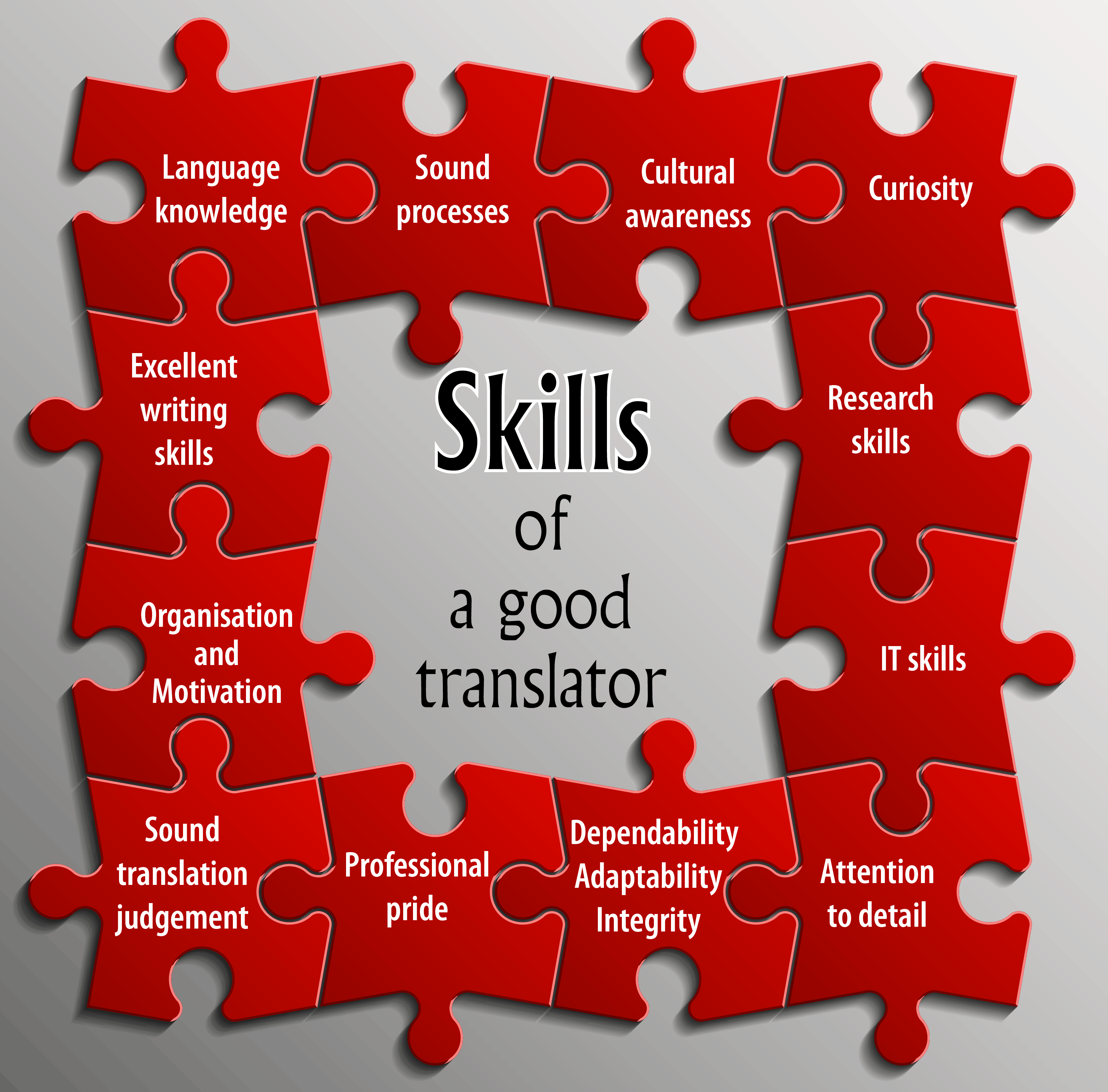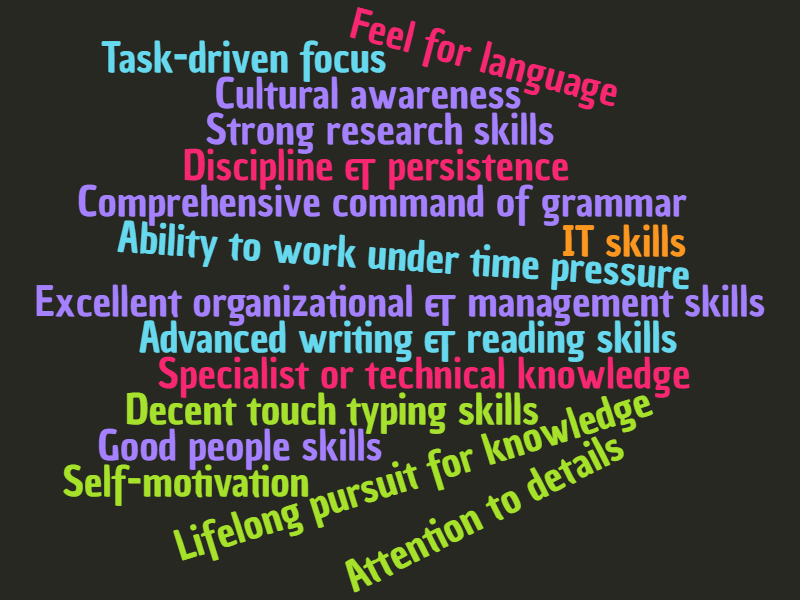A good translation service should be fast and reliable and done by certified translators to ensure high-quality output in various languages.
However, this is not enough to evaluate the quality of a translation.
In this blog, we will look at the top qualities of a good translation so that the next time you contact a translator, you will know what to look for!
Here are the top qualities of a good translation:
Accuracy
What sets apart a good human translator from a machine translation engine is accuracy! Humans are second to none in their ability to discern the right word or phrase to achieve a high-quality translation.
Besides meaning, however, the translator has to maintain the tone, style layout, etc. What’s more, there should be no missing words, phrases, or sentences.
Acronyms and rhymes should adapt well. Generally, a mistranslation might have adverse consequences; thus, accuracy is a must!
To fulfil these tasks, translators are required to have an excellent command of their working languages. On top of that, they should have expertise in a specific domain (e.g., technical, multilingual SEO or medical translation).
Accuracy, in turn, means that they are well-acquainted with the peculiarities of the content they translate. Last but not least, they should have a keen eye for detail since we all know the devil is in the minor details.
For instance, if a translator is asked to work on medical documents, they need to have the appropriate medical education or specialization to fulfill the task. What’s more, if they have to translate the content from French to German, for instance, the translator is required to be a native speaker of (or at least be native-like fluent in) German. The domain and the language pair also determine the translation costs.
Clarity
While clarity might seem very similar to accuracy, these are two somewhat different characteristics of a quality translation. Nevertheless, clarity hinges on the translator’s language skills and attention to detail as much as accuracy.
In terms of translation, clarity refers to the easy comprehension of a text. Again, this is a rather vague yet complex term. A precise translation means that the target text should be written well so that the reader can understand its meaning without any difficulty.
On the other hand, accuracy is about the correct translation of the text, while clarity is all about perception.
For instance, complex sentences with many relative or subordinate clauses are very common in the German language. However, in English, this is not the case.
So, to achieve clarity the translator, expected to transform the long sentences in German into shorter ones in English. In this way, the targeted English-speaking audience can easily comprehend the text.
Translators might even be expected to edit the source text before translating it to achieve clarity when working with a poorly written source text. Indeed, any good translator knows that regardless of the source text’s quality, the output’s clarity should be guaranteed.
Authenticity

One of the most fundamental translation rules says that a translation should not look, sound or read like a translation. Thus, authenticity is a central element of any quality translation.
An authentic translation means that the target text should be well written, and it can be easily confused for original work. In other words, there should be no signs that the target text is a translation of another one.
However, it is not easy to accomplish authenticity. To do so, there should be no mistakes (such as inappropriate words or tone) that might cast doubt on the authenticity of the target text.
For instance, a translator would never translate the German idiom “Ich verstehen nur Bahnhof” literary (“I only understand train station”). Still, instead, they would look for the appropriate equivalent in English – “It’s all Greek to me” would be a suitable English idiom, or they could translate it as “I don’t understand a thing!”.
By finding the equivalent words and phrases in the target language, the translator achieves authenticity. Accuracy, in turn, means that the target audience will never approach the target text as a translation but rather as an original work.
Authenticity is essential in the translation of literary works. A well-translated book or poem will be read as an original work. In fact, there is a ‘Best Translated Book‘ award that was inaugurated in 2008.
Indeed, a good translator should be so linguistically adept in their working languages that they know how to transfer the ‘feel’ of the original text. As a result, they can achieve this required level of authenticity.
Appropriate tone and style
The tone of a text refers to the author’s attitude, covertly or overtly, in text. Generally, not every document has a definite style. For instance, legal documents have a relatively neutral tone. In contrast, in literary texts and editorial documents, the author’s attitude is always evident.
The job of the translator, in turn, is to translate it appropriately and as authentically as possible. The translator may require adding some explanations. In other words, if translated literally, the tone of the source text might be offensive to the target audience.
In such instances, the translator needs to either refer to the translation style guide & adapt the style or add elements to make it clear to the audience.
What’s more, a good translator should be aware of the relevant formal aspects when they do a translation, such as the style of the work. Besides the usual formalities such as the logical structure of the text, its form, etc., a good translator should be able to maintain the appropriate content style. For instance, translating a multilingual website.
Tone and style mean they have to use suitable colloquial expressions (e.g., idioms, jargon) if the text style is informal. On the other hand, if they work with literary text such as a poem, a translator must maintain even the rhythm or the rhyme of the piece.
Cultural appropriateness

A good translator should always keep the audience of the target text in mind!
The translated content should be appropriately adapted to the cultural background of its audience. For instance, if the target text is related to foreign traditions or religions that are presumably unfamiliar to the target audience, it is the translator’s job to make sure that all terms are used appropriately.
The translator should look for the appropriate equivalents in the target language or write down notes explaining the matter in detail. When it comes to cultural appropriateness, the translator should ensure that any aspect of the target text will not offend or confuse the reader.
For instance, during the process of game localization, translators must carefully consider the cultural appropriateness of the language terms used in the game to avoid hurting the sentiments of the target audience.
As you can see, accomplishing cultural appropriateness makes the translation process even more complex. This also means that a translator is required to be native-like fluent in two or more languages and know in-depth the culture of both the target and source locales.
Consistency
Consistency is a must when it comes to any translation! Translation consistency refers to the regular and coherent use of appropriate language, tone, and style throughout the text.
For instance, if a translator is working on a manual, they have to make sure that they use the appropriate terms, maintain a neutral tone, and adhere to the style required by the client.
In literary translation, consistency is essential. Therefore, the linguist should make sure that they use the appropriate common expressions and idioms, the correct spelling and punctuation throughout the work.
Contemporary language
Languages are like living creatures, and they never cease to change. Their grammar, vocabulary, spelling – every aspect is changing. Thus, a good translator is always trying to stay up-to-date with their working languages. In this way, they can ensure that they use the appropriate words and expressions when they translate any content.
In conclusion
A good translation is solely dependable on both the translator’s abilities and clear instructions and guides provided by the client.
Besides good expertise in their working languages and area of specialization, several other aspects make a translator suitable; However, if there is a lack of communication between the client and the translator, it is doubtful that the quality of the output will be good.
Always make sure that the translator you work with is willing to communicate openly, has good time management skills, and is, most importantly, a reliable partner.
Are you looking for an accurate, clear, authentic, consistent and culturally appropriate translation?


 Afrikaans
Afrikaans Albanian
Albanian Amharic
Amharic Arabic
Arabic Armenian
Armenian Azerbaijani
Azerbaijani Basque
Basque Belarusian
Belarusian Bengali
Bengali Bosnian
Bosnian Bulgarian
Bulgarian Catalan
Catalan Cebuano
Cebuano Chichewa
Chichewa Chinese (Simplified)
Chinese (Simplified) Chinese (Traditional)
Chinese (Traditional) Corsican
Corsican Croatian
Croatian Czech
Czech Danish
Danish Dutch
Dutch English
English Esperanto
Esperanto Estonian
Estonian Filipino
Filipino Finnish
Finnish French
French Frisian
Frisian Galician
Galician Georgian
Georgian German
German Greek
Greek Gujarati
Gujarati Haitian Creole
Haitian Creole Hausa
Hausa Hawaiian
Hawaiian Hebrew
Hebrew Hindi
Hindi Hmong
Hmong Hungarian
Hungarian Icelandic
Icelandic Igbo
Igbo Indonesian
Indonesian Irish
Irish Italian
Italian Japanese
Japanese Javanese
Javanese Kannada
Kannada Kazakh
Kazakh Khmer
Khmer Korean
Korean Kurdish (Kurmanji)
Kurdish (Kurmanji) Kyrgyz
Kyrgyz Lao
Lao Latin
Latin Latvian
Latvian Lithuanian
Lithuanian Luxembourgish
Luxembourgish Macedonian
Macedonian Malagasy
Malagasy Malay
Malay Malayalam
Malayalam Maltese
Maltese Maori
Maori Marathi
Marathi Mongolian
Mongolian Myanmar (Burmese)
Myanmar (Burmese) Nepali
Nepali Norwegian
Norwegian Pashto
Pashto Persian
Persian Portuguese
Portuguese Punjabi
Punjabi Romanian
Romanian Russian
Russian Polish
Polish Samoan
Samoan Scottish Gaelic
Scottish Gaelic Serbian
Serbian Sesotho
Sesotho Shona
Shona Sindhi
Sindhi Sinhala
Sinhala Slovak
Slovak Slovenian
Slovenian Somali
Somali Spanish
Spanish Sundanese
Sundanese Swahili
Swahili Swedish
Swedish Tamil
Tamil Tajik
Tajik Telugu
Telugu Turkish
Turkish Ukrainian
Ukrainian Urdu
Urdu Uzbek
Uzbek Thai
Thai Vietnamese
Vietnamese Welsh
Welsh Xhosa
Xhosa Yiddish
Yiddish Yoruba
Yoruba Zulu
Zulu